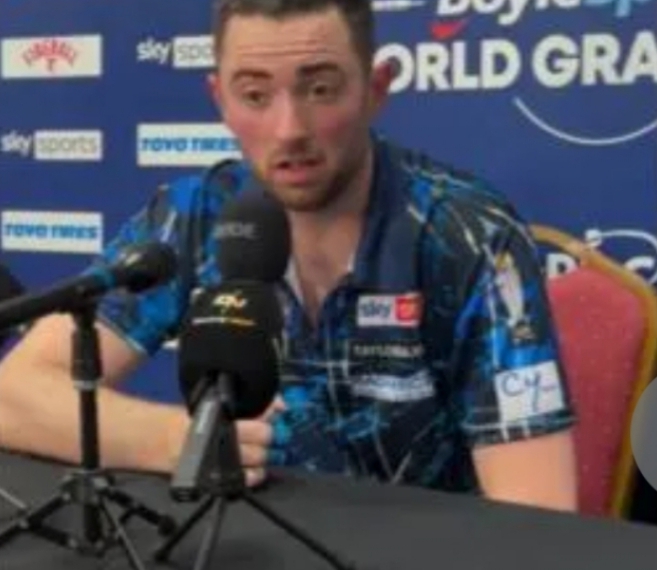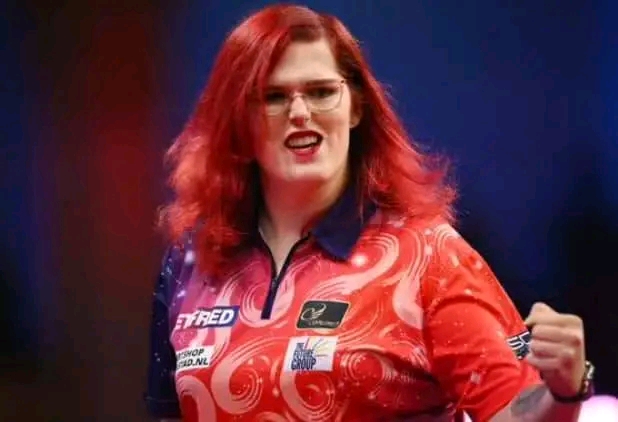The first speed bump: 10 takeaways from Celtics/Timberwolves

The Celtics lost their first game of the season against a tough Minnesota Timberwolves team.
The Boston Celtics lost their first game of the season against a physical Minnesota Timberwolves. From the opening tip, both teams found themselves in a battle. With no Derrick White, Joe Mazzulla stuck with a double-big lineup against a team that has a double-big system of their own.
For the second straight game, the Celtics weren’t at their best and had to dig deep to keep things close heading down the stretch. Unfortunately, a rugged defense had Boston looking out of sorts for most of the game, and the Timberwolves took advantage once overtime began, ramping up their effort levels and creating some separation.
No time-out
With approximately eight seconds on the clock and the Celtics tied at 101-101, Jaylen Brown had the ball. The Timberwolves had a half-court press and picked up Brown ahs Jayson Tatum near the logo. Mazzulla had a time-out at his disposal. He chose not to use it.
Brown got to his spot, created some space off the dribble, and let a three fly. Short.
There was a moment of madness that followed, but ultimately, that miss is what sent the game into overtime. Mazzulla not calling a time-out down the stretch isn’t new. His preference to allow the team to figure things out was a valid talking point last season.
The notion behind allowing the team to play without a time-out is so they can attack a defense as it is rather than setting up against a half-court defense with everyone in position.
Yet, the Timberwolves had their defense set. They were pressuring the ball and clogging the lanes. Perhaps a timeout in that moment could have been a deciding factor. Perhaps not. It’s clear Mazzulla trusts his players to make the right reads. In fairness, Brown’s shot ended up being a lightly contested three. It just didn’t fall. That doesn’t mean Mazzulla’s decision won’t be a talking point today, though.
#2 Jrue’s first bad game
Jrue Holiday has had a strong start to life in a Celtics uniform. He’s excelled on defense, made smart offensive decisions, and knocked down his shots. However, against the Timberwolves, he had his first clunker. At times, it felt like he was calling his own number without looking for his teammates.
Plays like the one shown above were a common sight in the second and third quarters. Holiday would pressure the rim, draw a crowd, and then take a tough, tightly contested shot when there were open shooters with clear passing lanes. In the instance shown above, Holiday has Pritchard wide open in the corner and around 14 seconds of the shot clock remaining. There was no need to force the issue.
Here’s another example: Holiday drives the empty corner, Tatum pops, and rather than kicking it out to Tatum, the veteran guard tries to shoot over two defenders in the paint. Any pass could have started a sequence to find the open man. Just pure tunnel vision in a game where Boston needed ball movement to beat Minnesota’s high-pressure defense.
Of course, there were some good moments to his game, most notable due to his active hands and hustle. Unfortunately, they were just few and far between as he looked to shoot himself out of a shooting slump. Below is an example of Holiday’s ability to make positive contributions with his energy and hustle.
Holiday’s performance was rough. There’s no way around it. He struggled on both sides of the court despite starting strong as a small defender on Karl-Anthony Towns. He will need to be better moving forward. Judging from the sample size we have, the poor performance is the anomaly, so there’s no reason to panic.
#3 Playing against Pressure
Minnesota did a fantastic job of pressuring the Celtics offense and forcing them into uncomfortable situations. Speaking after the game, Brown noted how the Celtics struggled to get into their primary actions and were forced to play out of broken plays throughout the game.
“They did a good job of trying to get us out of our sets and speed us up,” Brown said. “That’s what I think their focus was. Made it tough for us to get to our spots and the places we wanted to execute. We gotta fight for that. They were the first team to put that type of pressure on us. They did a good job of trying to speed us up and not let us get to our initial actions and play from there. They did a good job tonight.”
Over their six games thus far, the Celtics have been the high-pressure defensive unit in five of them. Minnesota gave Boston a taste of their own medicine. It might have led to a loss, but it will provide the coaching staff with a significant amount of game footage to help make the team better when facing that type of defensive environment moving forward.
You must tip your cap when a team defends at the level Minnesota did. Now, it’s about learning from the experience and figuring out ways to counter that level of intensity.
#4 Major bench issues
The bench rotation was a legitimate concern heading into the new season. The Celtics have arguably the strongest top-6 in the NBA. Yet, things fall off pretty quickly from there. Mazzulla went five deep off the bench. Lamar Stevens, Payton Pritchard, Sam Hauser, Svi Mykhailiuk, and Luke Kornet saw the court.
Those five players went a combined 4-of-15 from the floor, with three of those buckets coming from Sam Hauser. Put simply, there’s no offensive punch checking into the game off the bench. Pritchard, Hauser, and Al Horford, when he’s with that unit, are supposed to be the players to provide energy and impact.
Not only do the Celtics need to figure out their rotations and combinations, they also need to find ways to get more from their bench mob. Otherwise, tight games like this one are going to be a hard grind.
#5 Jaylen Brown’s first quarter
Jaylen Brown had a fantastic game, start to finish. For long stretches of the game, he was arguably the Celtics’ best player. Yet, it was the first quarter that really set the tone. Playing against fellow Georgia native Anthony Edwards, Brown was clearly looking to make a statement. He ended the game with 26 points, 7 rebounds, and 4 assists.
9 of those points, 2 of those rebounds, and 1 of those assists came in the first quarter.
Everything started with a run-out dunk on the fast break. Then, this monster poster on Rudy Gobert. Another five points followed courtesy of a layup and a drained three. Brown was also flying around on defense and guarding his yard. At times, his athleticism and speed looked like the perfect release valve against the pressure on Minnesota’s defense.
#6 Getting nerdy with it: Blowing up actions
One thing the Timberwolves did really well on defense was blow up some of the Celtics’ primary offensive actions. Throughout the game, Boston disrupted some of Minnesota’s actions in return. Both teams were slogging it out on defense, and both were finding success in spurts.
Nevertheless, I wanted to share to times the Celtics blew the Timberwolves offense
The first time was Al Horford blowing up a “zoom” action from the Timberwolves. Horford read the play and got in between the curler and the big man looking to initiate the handoff. Horford got his hand to the rock and forced the steal, although he turned the ball over seconds later as the Timberwolves swarmed to kill the fast break.
The second action that stood out was when Luke Kornet plucked a lob pass for Gobert clean out of the sky. The entire defensive possession was strong, and it wasn’t until the ball was reversed and the Celtics were in rotation that Kyle Anderson managed to penetrate off the dribble. Anderson floated in a lob pass for Gobert, but Kornet had their number and yoinked it right down.
#7 JT’s fourth quarter
Just like Brown had a strong first quarter, Tatum came alive in the fourth. Jaden McDaniels had done a fine job of keeping Tatum contained throughout the game. However, with a win on the line and the lights starting to shine a bit brighter, Tatum went into All-Star mode. He dropped 12 points while playing the entire quarter, as he put the team on his back.
Tatum got to the line, he drove the lane, and he hit threes, giving the Celtics a platform to push for a win down the stretch. The below “empty side drag action” is what got Tatum going and was also the bucket that saw the moment shift toward Boston with 8 minutes remaining in the game.Unfortunately, the Celtics failed to include Tatum in the offense at times, and that led to some disjointed possessions. It doesn’t make sense not to feed an All-Star who has it going, especially when the game is on the line.
#8 A clunker from deep
The Celtics may have lost this game, but they ran the Timberwolves close. That’s an encouraging sign, considering the team had a clunker from the perimeter. Overall, Boston shot 28.2% from three-point range throughout the game. Yet, they still found ways to get points on the board from post-ups, rim pressure, and mid-range shooting.
If this game had come in the middle of last season, it could have been a blowout. The Celtics have added more variation to their scoring profile, and their lack of reliance on the three-ball is what allowed them to stay in the game against Minnesota right until the end.
#9 The potential downside of a double-big line-up
Kristaps Porzignis handled a difficult task very well. Boston’s big man spread out the Timberwolves defense. He battled on the post and in the paint. And he fought for rebounds alongside Towns and Rudy Gobert. He was also one of the Celtics’ most impactful players throughout the game.
- You also can’t take anything away from Al Horford. He battled, defended well, screened, ran the court, and was a vital connector on both sides of the floor. Yet, there’s something about a double-big lineup that limits the Celtics fluidity and leads to more frequent offensive stagnation.
We saw similar struggles against the Brooklyn Nets — another game where Mazzulla ran with a double-big lineup. I get it. Minnesota has two giants on the court. Playing with a single-big allows for more consistent mismatches. However, the Celtics look more dangerous when operating in single-big lineups. Their defense is more versatile and can rotate at pace, with switches occurring almost instantly.
The offense is fluid, with inverted screens, cutting, and off-ball movement. It’s not that Porzingis and Horford can’t play together. Their skill sets mesh quite well. More than the fluidity that a single-big lineup generates fits better with the overall talent on the roster.
Again, this is a small sample size, but it has been an observation I’ve been tracking since last season when Mazzulla went to a double big with Robert Williams and Horford.
#10 Stagnant offense in the third
Midway through the third quarter, the Celtics offense stagnated significantly. The team went 1-of-13 from the field, and the movement became almost non-existent. The offense turned into a single high pick-and-roll with shooters spaced around the court. Miss after miss ensued, and the Timberwolves grew in confidence as they got out and ran after every miss.
There’s nothing wrong with the above possession. It’s a basic NBA offense and can be relied upon to generate points. However, this isn’t the offense we’ve been seeing from the Celtics to start the season. There’s limited movement, no secondary actions, and no one cutting to create space or occupy defenders. Brown is forced to drive the lane into the teeth of the defense with no clear-cut pass available to him.
Here’s another example from a few possessions later. Again, it’s a single high pick-and-roll, no cutting, no secondary actions. Just Kornet rolling to the rim and Payton Pritchard being forced to try and create off the dribble. This isn’t the Celtics basketball we’ve seen thus far, and hopefully, it isn’t something we will see much of moving forward.
Part of Boston’s stagnation was certainly the pressure Minnesota was putting them under. Another aspect was likely the lack of momentum the team had. Yet, sticking to what works is the best way to dig yourself out of a funk — the Celtics eventually got back to their usual brand of offense, but the Timberwolves had already got themselves rolling, and it proved hard to derail them.
Looking Ahead
The Celtics are back in action on Wednesday, Nov. 9. They face the Philadelphia 76ers in a matchup they should feel confident about winning. Boston usually plays the Sixers well. I would expect the Celtics to come out hot and look to build a lead so that they don’t lose two straight and begin to face the inevitable questions that come with that.
Philadelphia has been solid to start the season, though. They have won 5 of their 6 games. Nick Nurse has them playing as a unit, and Tyrese Maxey is emerging as a serious threat alongside Joel Embiid.
Still, rivalry games are fun! I can’t wait to see how it all plays out!









